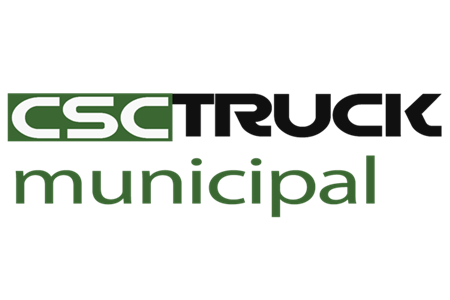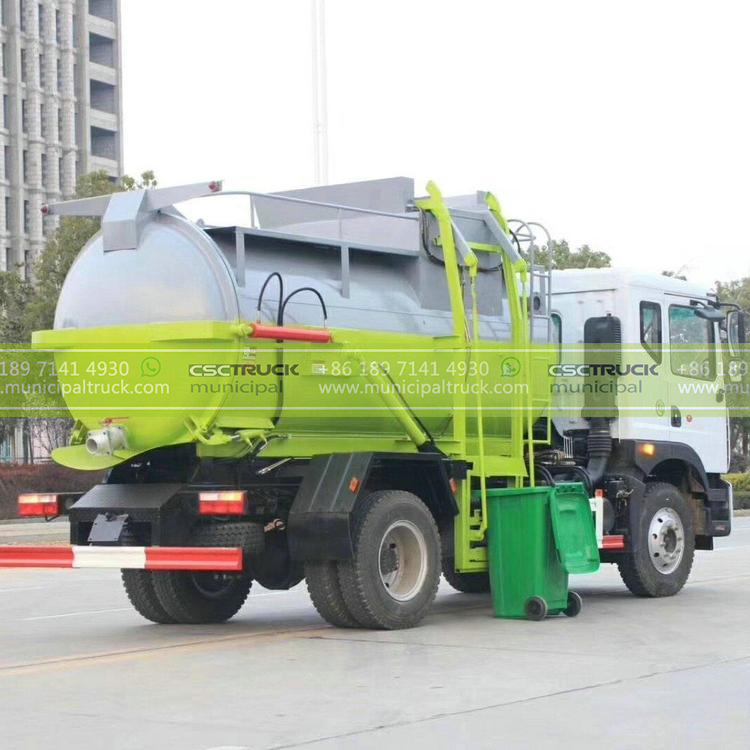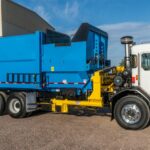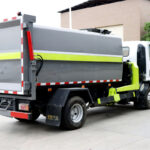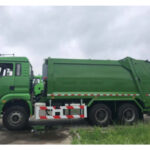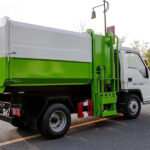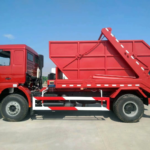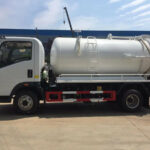The relentless pace of urbanization and growing environmental consciousness demand radical improvements in waste collection efficiency. Traditional rear-loader trucks, requiring multiple manual laborers to hoist bins, struggle to meet modern demands for speed, safety, and sustainability. Enter the automated side loader garbage truck (ASL), a technological powerhouse rapidly becoming the cornerstone of efficient municipal recycling programs. These specialized vehicles represent more than just a mechanical upgrade; they signify a fundamental shift towards automated collection systems that optimize routes, enhance worker safety, reduce operational costs, and significantly boost recycling rates. By integrating sophisticated mechanical arms, precise bin identification, and advanced route optimization software, ASL trucks are redefining the economics and environmental footprint of urban waste management, turning recycling routes from logistical challenges into models of streamlined resource recovery.
The Mechanics of Modern Waste Collection: Inside the Side Loader Operation
At the heart of the automated side loader’s efficiency lies its sophisticated hydraulic lifting arm. Mounted along the truck’s curb side, this articulating arm performs a complex sequence of tasks with remarkable precision. As the truck approaches a designated collection point, typically aligned with standardized wheeled carts (often 64-gallon or 96-gallon capacity) placed curbside by residents, the operator initiates the process from the safety and comfort of the cab. Using a joystick or touchscreen interface, they guide the arm towards the cart. RFID tags or barcode labels affixed to each cart are frequently scanned by an onboard reader, instantly verifying the customer account and ensuring only authorized containers are serviced – a critical feature for subscription-based or pay-as-you-throw programs.
The arm’s gripper then securely clamps the cart’s lifting bar. Powerful hydraulics smoothly elevate the cart high above the truck body, inverting it over the hermetically sealed hopper. This inversion ensures near-total material ejection, minimizing residue left behind – a significant improvement over manual dumping. The entire lift-dump-return cycle often completes in under 15 seconds, minimizing dwell time at each stop. Crucially, the operator remains safely enclosed within the cab, entirely removed from the physical hazards of lifting heavy bins, exposure to traffic, or potential contact with waste materials, including sharps or hazardous contaminants. This mechanization fundamentally alters the labor dynamic, enabling a single operator to manage routes previously requiring a driver plus two or three loaders.
Optimizing the Journey: Data-Driven Route Management for Recycling Fleets
The true transformative power of automated side loaders is unlocked when integrated with advanced fleet management software (FMS) and geographic information systems (GIS). These digital platforms move far beyond simple turn-by-turn navigation; they create dynamic, intelligent routing ecosystems designed for maximum recycling efficiency. FMS platforms ingest vast datasets: historical collection times per stop, real-time traffic conditions relayed via GPS, current cart weights (measured by onboard scales during dumping), and even weather forecasts affecting travel speed or collection feasibility. Predictive analytics algorithms process this data, constantly refining route sequences to minimize deadhead mileage (unproductive travel), reduce fuel consumption, and ensure the truck’s compaction body reaches capacity at optimal locations near transfer stations or processing facilities, avoiding premature returns or inefficient partial loads.
This software enables dynamic route adjustments based on real-world conditions. If a section of road is unexpectedly blocked, the system instantly recalculates the most efficient detour, updating the driver’s display. Managers gain unprecedented visibility into fleet performance through live dashboards, tracking metrics like stops per hour, tons collected per route, fuel efficiency per ton-mile, and route adherence. Crucially, the data collected – particularly cart weights and participation rates – provides municipalities and waste haulers with granular insights into recycling stream composition and contamination levels. This allows for targeted public education campaigns, improved bin distribution strategies, and more accurate forecasting for processing needs, creating a continuous feedback loop that enhances the entire recycling value chain.
Quantifying the Benefits: Efficiency, Safety, and Environmental Gains
The operational advantages of deploying automated side loaders on recycling routes translate into tangible, measurable benefits across multiple domains:
- Labor Cost Reduction & Productivity Surge: Replacing multiple manual loaders with a single operator per truck represents a significant reduction in direct labor costs. More importantly, productivity soars. Studies consistently show ASL trucks can service 50-80% more stops per hour compared to traditional rear-loaders with a crew. This increased throughput allows municipalities to cover larger areas with fewer vehicles or shorten collection cycles, improving service levels without proportionally increasing fleet size or labor budgets. Reduced worker turnover associated with the elimination of grueling physical labor further contributes to operational stability and cost predictability.
- Enhanced Worker Safety: Waste collection consistently ranks among the most hazardous occupations, primarily due to musculoskeletal injuries from lifting, slips and falls, and traffic-related incidents. By removing the loader role entirely, ASL trucks virtually eliminate these acute physical risks. Operators remain safely seated, controlling the process electronically. Reduced exposure to potentially hazardous waste materials and traffic also contributes to a significantly improved long-term occupational health profile.
- Reduced Operational Costs & Vehicle Wear: While the upfront cost of an ASL truck is higher than a rear-loader, the operational savings are substantial. Lower fuel consumption stems from optimized routes, reduced vehicle idling (no waiting for manual loading), and fewer trucks needed overall. Reduced wear and tear on brakes and drivetrains occurs due to less frequent stopping and starting associated with manual bin handling. Lower worker compensation insurance premiums are also a direct consequence of the improved safety record.
- Increased Recycling Rates & Stream Quality: The convenience of wheeled carts encourages greater resident participation in recycling programs compared to smaller, carry-out bins. The standardization enforced by the automated arm ensures bins are placed correctly for collection. Furthermore, the consistent, thorough emptying of carts reduces residue contamination compared to manual dumping. The data collected on weights and participation allows for highly targeted outreach to boost compliance and reduce contamination – key factors in producing high-quality recyclables that processors demand.
Integrating Automation into Existing Fleets: Challenges and Strategies
Transitioning to an automated side loader system is not merely a vehicle purchase; it represents a significant operational shift requiring careful planning and investment beyond the trucks themselves:
- Cart Standardization & Distribution: The core requirement is a compatible fleet of standardized wheeled carts with specific lifting bars. Procuring and distributing hundreds or thousands of these carts to residents represents a major logistical and financial undertaking for municipalities or haulers. Effective public communication campaigns are essential to explain the new system, cart placement requirements, and the benefits to residents. Managing cart repairs, replacements, and tracking (often via RFID) is an ongoing operational task.
- Infrastructure & Training: Depot infrastructure may need upgrades, such as specialized lifts for truck maintenance. Crucially, comprehensive operator training is vital. Drivers must master the precise joystick or touchscreen control of the hydraulic arm, understand the routing software interface, and learn new safety protocols specific to operating the automated system. Maintenance technicians also require specialized training on the complex hydraulic and electronic systems unique to ASLs. Fleet management software implementation and integration with existing municipal systems is another critical, and sometimes complex, step.
- Navigational Constraints: The physical size of ASL trucks and the required swing radius for the lifting arm can pose challenges in areas with extremely narrow streets, low-hanging trees, dense overhead wires, or parked cars obstructing access to bins. Careful route planning using GIS data is crucial to identify and mitigate these potential obstacles. In some ultra-dense or constrained environments, smaller, more maneuverable alternatives like hook loader garbage trucks equipped with specialized skip bins might be necessary for specific sections, though they lack the curbside automation efficiency of dedicated ASLs.
The Environmental Imperative: Reducing Carbon Footprint and Promoting Circularity
The environmental benefits of automated side loader trucks extend far beyond simply collecting recyclables; they actively contribute to reducing the carbon footprint of the waste management system itself. The dramatic reduction in fuel consumption per ton of material collected – achieved through route optimization, reduced idling, and fewer vehicles on the road – directly translates into lower greenhouse gas emissions. Optimized routing means less mileage driven, leading to reduced air pollution (NOx, PM) in urban areas. The increased efficiency and lower costs associated with ASLs make robust curbside recycling programs more economically viable for communities, diverting valuable materials like paper, plastic, glass, and metal from landfills and back into manufacturing streams as secondary raw materials. This resource recovery is fundamental to the circular economy, conserving virgin resources, reducing energy consumption in manufacturing, and minimizing the environmental degradation associated with extraction and processing. By making recycling collection more efficient, cost-effective, and scalable, automated side loader trucks are a critical enabler for municipalities striving to meet ambitious waste diversion and climate action goals.
Future Horizons: Automation, AI, and Fleet Synergy
The evolution of the automated side loader is far from complete. Emerging technologies promise even greater efficiency, intelligence, and integration within the waste management ecosystem. Artificial intelligence (AI) and machine vision systems are being developed to enable the robotic arm to identify, locate, and grab bins autonomously, potentially reducing operator workload and improving precision, especially in complex environments. Predictive maintenance analytics, powered by sensors monitoring hydraulic pressure, engine performance, and component wear, will move maintenance from scheduled intervals to condition-based interventions, minimizing costly breakdowns and downtime. Real-time contamination detection using near-infrared (NIR) spectroscopy or cameras during the dumping cycle could provide instant feedback on bin contents, allowing for immediate tagging of contaminated bins and targeted resident notifications. Integration with smart city platforms will allow for dynamic route adjustments based on real-time fill-level sensors in bins (though widespread deployment remains a challenge), traffic management systems, and even weather events. Ultimately, the future holds greater fleet specialization and synergy. While ASLs dominate curbside collection of commingled recycling and refuse, other specialized vehicles remain crucial. Compactor trucks, with their powerful hydraulic rams, are indispensable for high-volume commercial waste, transfer station operations, and densely packed materials where maximizing payload density before landfill disposal is paramount. The modern waste management fleet leverages the unique strengths of each vehicle type – the automation and efficiency of the side loader for standardized curbside collection, the brute-force compaction capability of the compactor for bulk waste, and the versatility of the hook loader for containerized systems – working in concert to create a truly integrated, efficient, and sustainable waste handling infrastructure.
